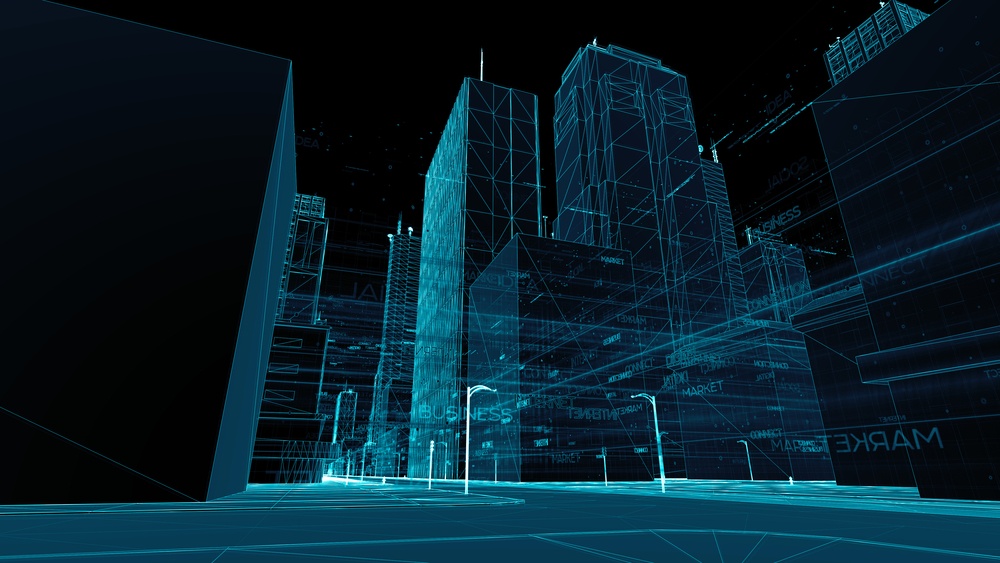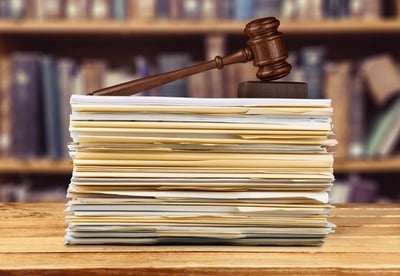Applying Modern Engineering Design in Existing Buildings

Engineering design is normally associated with new constructions and major renovations, where the project in question has not been built yet. However, engineering design tools can also be used to improve operation and maintenance in existing properties. Keep in mind that project documents continue to be useful after the building has been completed: they are an invaluable reference for maintenance and troubleshooting, and they provide a useful starting point for future expansions and renovations.
Modern design software allows the digital storage of project documents, which ensures a copy is always available if the printed plans and specifications are lost. However, software tools were not available for older buildings, and project documentation was completed by hand. As a result, many buildings no longer have the original project drawings, or they have deteriorated to the point where they become impossible to read.
Do you need new technical documentation for your building?
Project documents are not only useful during the design phase. Building management becomes much more difficult when there is no technical documentation available:
- Maintenance activities are less effective: Additional inspection is required to detect issues and analyze their impact, and their solution often involves a trial-and-error approach.
- Property upgrades cannot be planned and budgeted effectively: It is difficult to predict how the proposed changes will affect existing building systems, and many change orders can be expected during the construction process.
Managing maintenance activities and building upgrades without technical documents is like trying to reach a specific address without a map, in a city you have not visited before. You will eventually get there, but will not follow the most efficient route.
Creating Technical Documents for an Existing Building
If you are managing a property that lacks technical documentation, an engineering firm can help you create a set of project documents that reflects the current building condition. Although this involves an expense, it can be considered an investment given the long-term benefits.
- Maintenance can be carried out more efficiently, preventing equipment breakdowns and expensive replacements. Your maintenance team can start working proactively, solving problems before they happen.
- During a major renovation or building expansion, technical documentation is useful when integrating the proposed changes with the existing installation. When there is no reference available for building alterations, there are unpredictable expenses.
Modern building modeling software can create design documents in just a fraction of the time that was needed when all drawings were made by hand. The first step is creating a geometric 3D model of your building, which indicates the space requirements and shapes of components. Then, consulting engineers carry out a site inspection to gather the technical data that is added to the model. The gathered data answers important questions about building systems, such as the following:
- What are the technical specifications of each building system component?
- Are there any damaged parts? Does any of them need an urgent replacement?
- Which materials are used by piping, conduit, air ducts and similar components?
A lot of this information may seem trivial and easy to obtain. However, consider the time lost on inspections if you follow that approach whenever you need information about building systems. There are also cases when your maintenance team must solve issues as quickly as possible, and building documentation speeds up the process considerably.
Meeting NYC Building Codes and Local Laws

In addition to simplifying property management, technical documentation helps you meet the requirements of NYC building codes and local laws. Keep in mind that code compliance does not end once the building is completed - building codes are reviewed and updated all the time, and new requirements are sometimes made retroactive for existing properties. The following are some examples of mandatory upgrades for existing properties:
- If your building is covered by Local Law 26, it must have a fully operational sprinkler system by July 1, 2019.
- If your property is covered by Local Law 88, its lighting systems must be compliant with the NYC Energy Conservation Code by January 1, 2025.
- Energy efficiency requirements for NYC buildings are currently being discussed, and new legislation will mandate a 20% reduction in energy consumption by 2030.
These building upgrades must be submitted to the NYC Department of Buildings for approval, and the application process includes technical documentation. The permitting procedure can be completed faster if you already have building documents, since they are used as a starting point for the mandatory upgrades. Otherwise, you have to create project documentation from zero, first for the building itself and then for the upgrade!
If your building lacks technical documentation, a qualified engineering company can help you create it. Modern design software and information technologies speed up the process, while minimizing disruption of building operations. Once you have an updated building model with detailed information about its systems, you will have gained a valuable property management tool.

Michael Tobias
Michael Tobias, the Founding Principal of NY Engineers, currently leads a team of 50+ MEP/FP engineers and has led over 1,000 projects in the US
Related Posts
Join 15,000+ Fellow Architects and Contractors
Get expert engineering tips straight to your inbox. Subscribe to the NY Engineers Blog below.



